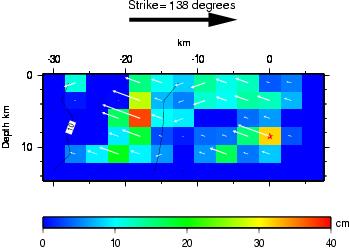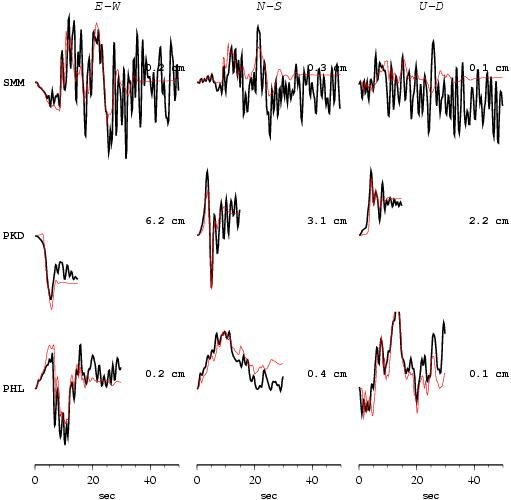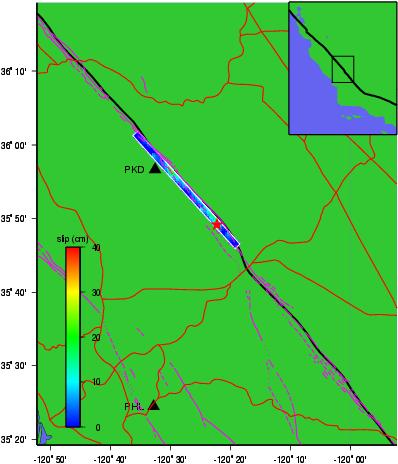Preliminary Result
2004 (Mw 5.9) Parkfield Earthquake
Chen Ji, Caltech
DATA Process and Inversion
We downloaded three closest strong motion records from CISN. They were first converted to displacement by double-integration and then used to constrain the slip history using a finite fault inverse algorithm (Ji et al, 2002). We use the hypocenter of CISN (Lon.=-120.37 deg.; Lat.=35.82 deg.). The fault planes are defined by slightly modifying the quick moment tensor solution of BDSN.
Result
We choose the nodal plane along the San Andreas fault (strike=138 deg., dip=83 deg.). The seismic moment released based upon this plane is 8.1x10**24 dyne.cm. The rupture propagates about 20 km northwestward and reaches its maximum value (about 40 cm) near the station PKD (Parkfield). There is no significant slip occurred north of PKD.
Cross-section of slip distribution

Figure: A big black arrow shows the fault's strike. The color shows the slip amplitude and arrows indicate the motion direction of the hanging wall relative to the footwall. Contours show the rupture initiation time and a red star indicated the hypocenter location.
Comparison of data and synthetic seismograms

Figure: The Data are shown in black and the synthetic seismograms are plotted in red. Both data and synthetic seismograms are aligned by the P arrivals. The number at the end of each trace is the peak amplitude of the observation in cm.

Figure: Surface projection of the slip distribution.
Download (Slip Distribution)
| SUBFAULT FORMAT | CMTSOLUTION FORMAT |
References
Ji, C., D.J. Wald, and D.V. Helmberger, Source description of the 1999 Hector Mine, California earthquake; Part I: Wavelet domain inversion theory and resolution analysis,GCMT project: http://www.globalcmt.org/
USGS National Earthquake Information Center: http://neic.usgs.gov
Global Seismographic Network (GSN) is a cooperative scientific facility operated jointly by the Incorporated Research Institutions for Seismology (IRIS), the United States Geological Survey (USGS), and the National Science Foundation (NSF).
‹Back to Slip Maps for Recent Large Earthquakes home page